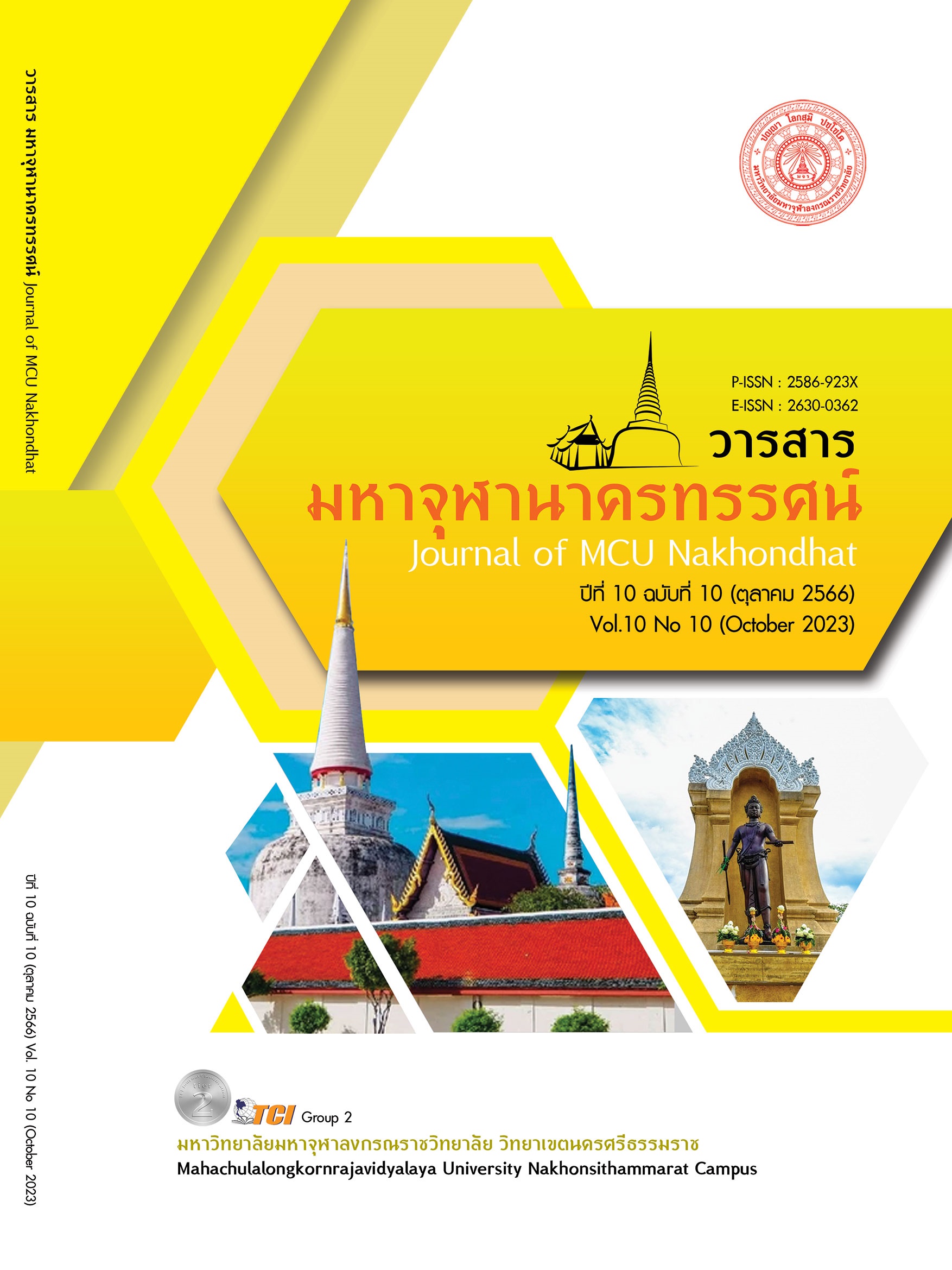BODY DIMENTIONS AND BODY COMPOSITION OF HIGH - TALENTED YOUTH TAEKWONDO ATHELETES
Main Article Content
Abstract
This research was aimed to study the body dimensions and body composition and comparing sizes and body composition of high - talented youth taekwondo athletes. This was quantitative research. Samples used in this research were 120 black belt taekwondo athletes from Bangkok representatives and taekwondo general athletes. They were divided into 60 male athletes and 60 female athletes by purposive sampling. After measuring height, weight, arm length, leg length, and body fat mass. Using analyzed with average, standard deviation, independent t - test it was found that 1) The average height of taekwondo athletes in black belt and colors belt; both male athletes ( = 174.38 + 3.97) and female athletes (
=167.87 + 4.70), were significantly different at the level of .05. 2) The average body fat mass of taekwondo athletes in black belt and colors belt; both male athletes (
= 13.38 + 4.44) and female athletes
( = 14.79 + 5.68), were significantly different at the level of .05. 3) The average arm length of taekwondo athletes in black belt and colors belts; both male athletes (
= 173.86 + 4.11) and female athletes (
= 166.83 + 5.10), were significantly different at the level of .05. 4) The average leg length on both side of legs of taekwondo athletes in black belt and color belt; both male athletes (dominant side:
= 91.20 + 4.78, non - dominant side:
= 90.16 + 4.82) and female athletes (dominant side:
= 86.03 + 4.28, non - dominant side:
= 86.00 + 4.53), were significantly different at the level of .05.
Article Details

This work is licensed under a Creative Commons Attribution-NonCommercial-NoDerivatives 4.0 International License.
References
ชัชวาล ขาวละออ. (7 มกราคม 2565). หลักการบ่งชี้นักกีฬาเทควันโดที่มีความสามารถสูงในกีฬาเทควันโด. (รังสฤษฏ์ จำเริญ, ผู้สัมภาษณ์)
ทวีศิลป์ คำนวณ. (7 มกราคม 2565). หลักการบ่งชี้นักกีฬาเทควันโดที่มีความสามารถสูงในกีฬาเทควันโด. (รังสฤษฏ์ จำเริญ, ผู้สัมภาษณ์)
รังสฤษฏ์ จำเริญ. (2558). การพัฒนาตัวบ่งชี้ความสามารถพิเศษของนักกีฬาเทควันโดในระดับชั้นมัธยมศึกษาตอนปลาย. ใน วิทยานิพนธ์ปริญญาดุษฎีบัณฑิต สาขาสุขศึกษาและพลศึกษา. จุฬาลงกรณ์มหาวิทยาลัย.
รังสฤษฏ์ จำเริญ, และคณะ. (2561). ขนาดและส่วนประกอบร่างกายของนักกีฬาเทควันโดในการแข่งขันกีฬาเยาวชนแห่งชาติ ครั้งที่ 32. วารสารสุขศึกษา พลศึกษา และสันทนาการ, 43(2), 13 - 22.
วิรุทธ์ นุ่มรอด. (2544). ขนาดของร่างกาย ส่วนประกอบของร่างกาย และความสามารถในการวิ่งของนักกีฑาประเภทลู่ ในการแข่งขันกีฬาแห่งชาติ ครั้งที่ 32. ใน ปริญญานิพนธ์มหาบัณฑิต, สาขาสุขศึกษาและพลศึกษา. มหาวิทยาลัยศรีนครินทรวิโรฒ.
ศักดิ์ชาย พิทักษ์วงศ์. (15 ธันวาคม 2557). กระบวนการบ่งชี้ผู้มีความสามารถพิเศษทางการกีฬา. (รังสฤษฏ์ จำเริญ, ผู้สัมภาษณ์)
Hoare, D.G. (2001). SISA Talent Identification and Selection Manual Sport and Recreation South Africa. Retrieved October 22, 2015, from http://www.sasc.org.za/ClientFiles/ SISA%20Swim ming.doc
Kazemi , M. et al. (2010). A profile of 2008 Olympic Taekwondo competitors. Journal of the Canadian Chiropractic Association, 54(4). 243 - 249.
World Taekwondo. (2020). World Taekwondo Members. Retrieved January 27, 2020, from http://m.worldtaekwondo.org/about-wt/organization.html


